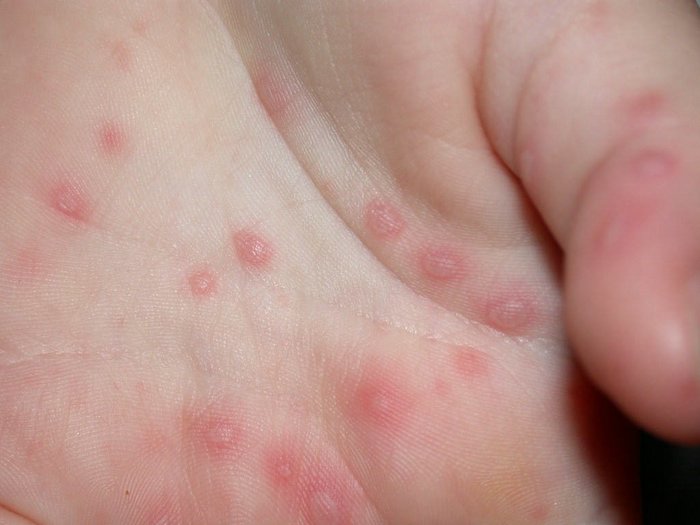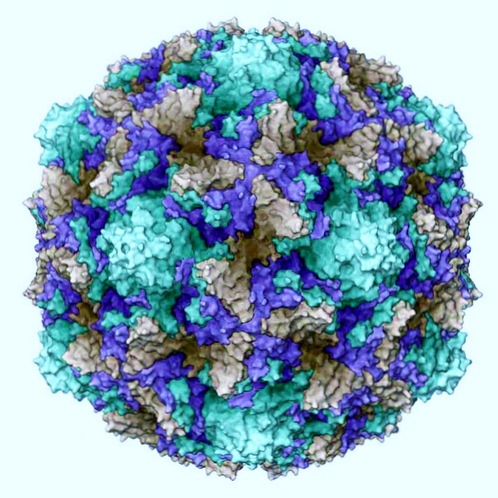Health News – You’ve got a fever and a cough and you feel awful. Or maybe your child is down for the count. It’s probably that new virus that’s been going around and making the news, you think. Or is it? Here’s how to know if you’ve got enterovirus D-68, or EV-D68, and what you should do about it.
Probably not, doctors say. Only 277 people have been definitively diagnosed with EV-D68 in 40 states since mid-August. That’s not very many, given how many different viruses are out there causing respiratory disease, from rhinoviruses to adenoviruses and influenza, as well as the more exotic sounding paramyxoviruses and parainfluenza. “It’s just incredible. There are hundreds of different types and subtypes just of rhinovirus and enterovirus,” says Steven Kleiboeker at Missouri-based Viracor-IBT Laboratories. That said, 39 percent of samples coming in to be tested at Viracor-IBT are turning out to be some kind of enterovirus or rhinovirus, about double the usual percentage, says Michelle Altrich, chief scientific officer at the company.
How can I tell?
Most of these viruses cause similar symptoms — sniffling, coughing, fever, muscle aches. The only way to know for sure is to test for it and most doctors don’t bother. “There is no way to tell by looking at a child which of many respiratory viruses they may be infected with, and in most cases it doesn’t matter,” says Dr. Jeff Duchin of the University of Washington and a member of the Infectious Disease Society of America. Treatment’s the same for all of them — rest and fluids and maybe ibuprofen or acetaminophen to make them more comfortable. Oh, and that old wive’s tale about it being a virus if the phlegm is yellow and a bacteria if it’s green, or the other way around? It’s not true.
When do I go to the ER?
None of the many respiratory viruses out there, including EV-D68, usually cause severe disease in healthy children. But kids — and adults — with asthma, chronic lung or heart disease or neurological disease can get really very ill from any respiratory virus. There are children on ventilators with EV-D68 this year, although no deaths have been reported yet. “One of the messages we push is about asthma control,” Duchin said. Even harmless-sounding adenoviruses and rhinoviruses can kill, and respiratory syncytial virus, or RSV, kills more than 300 children a year and as many as 14,000 elderly people every year.
How do I treat it?
There’s no specific treatment for EV-D68, besides bed rest, fluids and maybe an analgesic. There’s no treatment for most respiratory viruses and they all cause similar symptoms, anyway. The main exception is influenza — two drugs, Relenza and Tamiflu, can reduce symptoms and prevent severe disease if given within a day or so of the first symptoms — that’s one reason to get a flu test.
Antibiotics absolutely, positively do not help treat viruses and it can be downright dangerous to take them. Health experts are trying to get doctors to stop inappropriately prescribing antibiotics and to stop patients from demanding them. “It can make you feel better just to know you are getting treatment,” says Duchin. But that improvement is more likely due to the placebo effect. “The placebo effect is real,” he says. Even if you develop bronchitis, it’s more likely a virus than a bacteria — the exception being if you have chronic lung disease anyway, like COPD or cystic fibrosis.
How can I prevent it?
There’s no vaccine against EV-D68 or against most respiratory viruses, for that matter. Doctors stress one reason to get a flu shot every year is to at least rule out the main circulating influenza viruses as a possible cause. For children and the elderly, pneumococcal vaccines can also prevent a range of pneumonia-causing infections. And when people are vaccinated, they are less likely to get sick from all causes — scientists are not quite sure why, but infection with one agent may tend to make people more susceptible to a second infection. The best protection from any infectious disease is good hygiene, and that means mostly washing hands. Soap and water washes away pathogenic bugs, and alcohol gels or disinfectant wipes make a good substitute. People can be infected by carrying viruses from their hands to their eyes, noses or mouths, so keeping your hands away from your face is a good idea, too.
By MAGGIE FOX, NBC News


